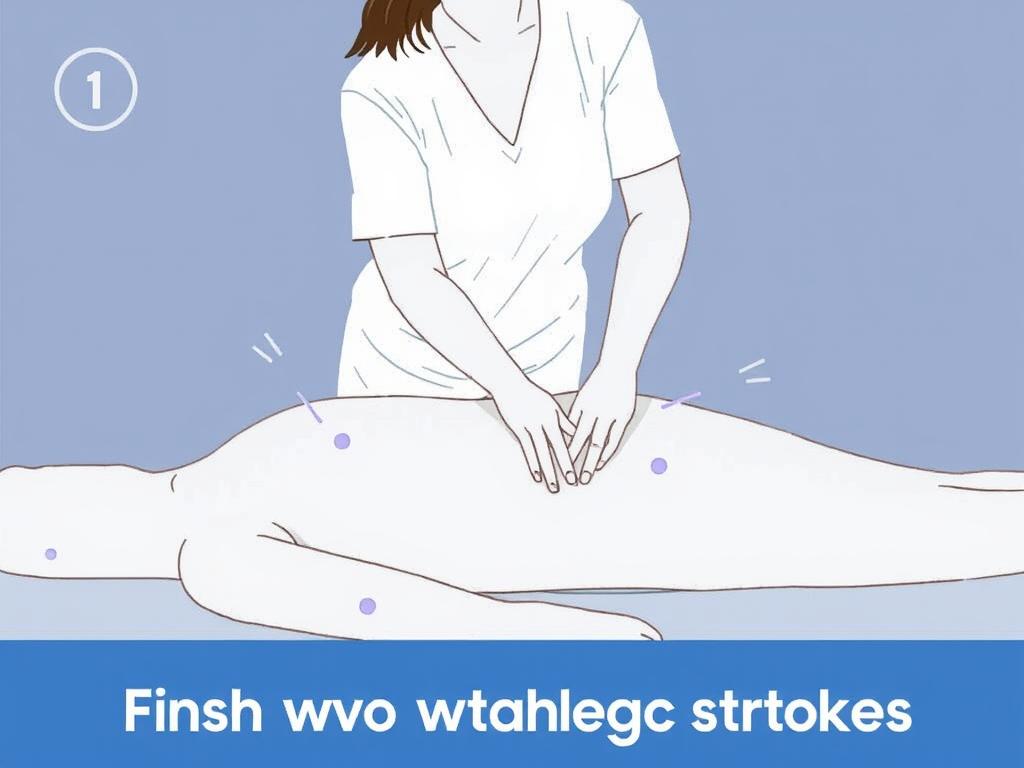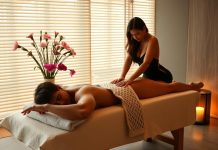Imagine coming home after a long, stressful day and being able to unwind completely with just a simple touch. That’s the magic of a body rub massage. Whether you’re seeking relief from muscle tension, craving a moment of pure relaxation, or looking for a way to improve your overall wellness, body rub massage offers a multitude of benefits. It’s more than just a pampering session; it’s a holistic approach to nurturing your body and mind. In this comprehensive guide, we’ll explore everything you need to know about body rub massage—from its origins to techniques, benefits, and tips to get the most out of your experience.
What Is Body Rub Massage?
Body rub massage is a form of therapeutic and relaxing massage involving the manual manipulation of soft tissues using various strokes and techniques. Its primary goal is to ease muscle soreness, improve circulation, and promote relaxation. Unlike targeted deep tissue massages that focus on specific issues, body rub massage is more general, focusing on the whole body or specific areas that need calming or revitalization.
While the term “body rub” may evoke images of traditional massage practices across different cultures, today, it represents a modern, accessible approach suitable for people of all ages. It combines gentle strokes, kneading, and sometimes the use of oils or lotions to facilitate smooth, soothing movements.
Origins and Cultural Significance of Body Rub Massage
The concept of body rub massage isn’t new. Variations of massage have been a part of many traditional cultures worldwide—from the ancient Chinese Tui Na to Ayurvedic massage in India, and Japanese Shiatsu. Over centuries, these practices have emphasized touch as a healing modality—a way to restore balance and harmony in the body.
The Western adaptation of body rub massage mainly emerged in the 20th century, influenced by Scandinavian massage techniques and European spa cultures. Today, it’s considered a universal method to enhance physical and emotional well-being.
Different Types of Body Rub Massage Techniques
Understanding the different techniques helps you choose the right kind of body rub massage for your needs. While the terminology can sometimes overlap, here are some of the most common styles and their key features:
- Swedish Massage: Known internationally, this technique uses long, gliding strokes (effleurage), kneading (petrissage), and light tapping (tapotement). It’s excellent for overall relaxation and improving circulation.
- African Body Rub: Incorporates deep, rhythmic strokes with emphasis on areas of tension, often using natural oils infused with herbs.
- Hot Stone Massage: Smooth heated stones are placed on specific points, combined with traditional massage movements, to deepen relaxation.
- Shiatsu: A Japanese technique involving finger pressure on specific points (acupuncture points), promoting energy flow and holistic balance.
- Thai Massage: Incorporates assisted stretching, acupressure, and rhythmic compressions, often performed on a padded floor.
Each type of body rub massage has its unique benefits and preferred applications, depending on what you’re seeking—be it stress relief, muscle recovery, or energy balancing.
How Body Rub Massage Differs From Other Massages
While many massage styles share similarities, body rub massage differs primarily in its focus on gentle, soothing strokes aimed at overall relaxation rather than intense muscle manipulation. It generally uses lighter pressure, making it ideal for sensitive individuals or those new to massage therapy. It’s also easier to customize for self-care, making it accessible for home use.
Benefits of Body Rub Massage
The benefits of body rub massage go far beyond just feeling good. Regular sessions can positively impact your physical health, mental clarity, and emotional stability. Let’s explore some of the key benefits:
Physical Benefits
| Benefit | Description |
|---|---|
| Muscle Relaxation | Gently easing muscle tension, reducing soreness, and preventing stiffness. |
| Improved Circulation | Stimulating blood flow, which helps deliver oxygen and nutrients to tissues and remove waste products. |
| Enhanced Flexibility | Loosening tight muscles and fascia to improve movement and reduce injury risk. |
| Detoxification | Supporting lymphatic flow to eliminate toxins from the body. |
| Pain Relief | Alleviating chronic pain conditions like backache, headaches, and joint discomfort. |
Mental and Emotional Benefits
A body rub massage isn’t just good for your body—it’s also a powerful tool for mental health.
- Stress Reduction: Produces relaxation hormones like serotonin and endorphins.
- Anxiety and Depression Relief: The calming effects can help manage mood disorders.
- Improved Sleep: Promotes restful sleep by lowering cortisol levels.
- Mindfulness and Body Awareness: Encourages you to tune into your body and reconnect with your senses.
Regular touch therapy can lead to better emotional resilience and overall happiness.
How to Prepare for Your Body Rub Massage Session
Preparation is key to making the most of your massage experience. Whether visiting a professional therapist or performing a self-massage, some simple steps can help set the stage for maximum relaxation.
Creating a Relaxing Environment
Choose a quiet, comfortable space. Dim the lights, perhaps light some scented candles or diffuse calming essential oils like lavender or chamomile. Keep the room warm to prevent chills, and play soft, soothing music to enhance relaxation.
Gathering Necessary Supplies
If you’re self-massaging, you’ll want to have:
- High-quality massage oils or lotions—all-natural if possible.
- Clean towels or sheets.
- A mirror for checking your technique.
- Comfortable clothing or nothing for skin contact if preferred.
Preparing Your Body
Take a warm shower or bath before the massage to relax muscles and open pores. Stay well-hydrated and avoid heavy meals immediately before the session.
Step-by-Step Guide to Performing a Body Rub Massage
Performing a basic body rub massage at home can be simple yet profoundly effective. Here’s a step-by-step guide:
Step 1: Choose Your Technique and Area
Decide which parts of your body you want to focus on—such as shoulders, back, legs, or arms. Select gentle strokes or kneading techniques aligned with your comfort level.
Step 2: Apply Oil or Lotion
Warm a small amount of massage oil or lotion in your hands and apply evenly to the area to reduce friction and facilitate smooth movements.
Step 3: Start with Gentle Effleurage
Use long, sweeping strokes to warm up the muscles, starting from the distal parts (hands and feet) toward the center of the body.
Step 4: Incorporate Kneading and Circular Motions
Apply gentle pressure with your fingertips or palms, kneading the muscles to release tension. Use circular motions to cover larger areas effectively.
Step 5: Focus on Tense Areas
Spend additional time on knots or especially tight regions, applying steady pressure and soothing strokes.
Step 6: Finish with Light Strokes

End each session with gentle stroking to promote lingering relaxation and ease.
Frequency and Duration for Optimal Results
Consistency is key to experiencing lasting benefits. For general wellness, a body rub massage session 1-2 times weekly can be sufficient. Each session typically lasts between 30 to 60 minutes, depending on your schedule and needs. If doing self-massage, even 10-15 minutes can make a difference, especially if focused on trouble spots.
When to Seek Professional Assistance
0
While self-massage is beneficial, professional therapists bring experience and specialized techniques that can target specific issues like chronic pain or injuries. If you have underlying health conditions, such as cardiovascular issues, skin infections, or recent surgeries, consult your healthcare provider before engaging in massage therapy. For persistent pain, stress, or muscular problems, professional massage can be a valuable supplement to your wellness routine.
Safety Tips and Best Practices
To ensure a safe and effective massage experience:
- Communicate your comfort levels clearly, adjusting pressure as needed.
- Avoid massaging over injuries, rashes, or open wounds.
- Use high-quality, natural oils to minimize allergic reactions.
- If feeling dizzy or uncomfortable, stop immediately.
- Hydrate well after the session to flush out toxins.
Remember, everyone’s body is different; paying attention to your responses will help you customize the experience for optimal benefits.
Conclusion
Embarking on the journey of body rub massage can be a transformative experience that enhances your physical health and emotional well-being. From understanding its origins and various techniques to mastering simple self-massage tips, you now have a foundation to start integrating this practice into your life. Regular body rub massage not only alleviates muscle tension and improves circulation but also nurtures your mental health by reducing stress and promoting relaxation. Whether you opt for professional sessions or enjoy creating your own at-home routines, consistency and mindfulness are your best allies. Remember to listen to your body, prioritize safety, and enjoy the soothing, rejuvenating effects that a gentle touch can bring. Your body deserves this simple yet powerful act of self-care—so take the time to indulge in a body rub massage today and unlock a healthier, happier you.






